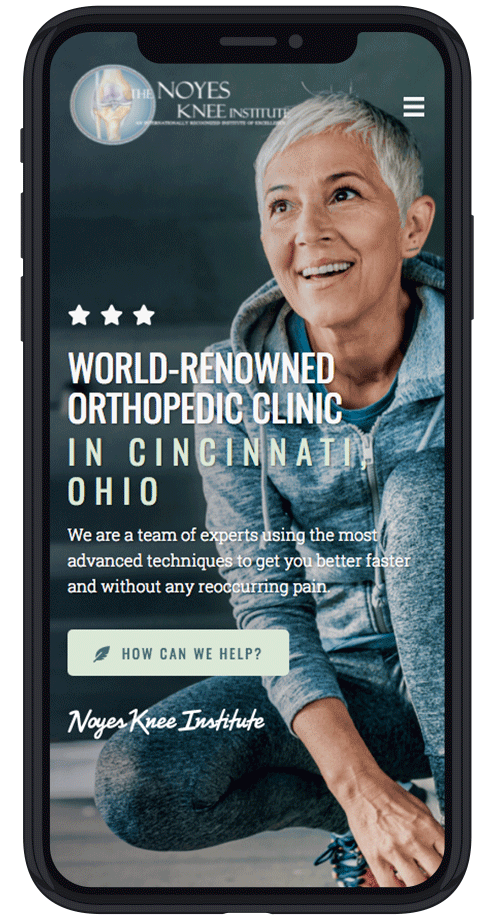Published On
Category
Injuries to the meniscus are common, especially among athletes and individuals involved in physical activities. Pain, inflammation, and restricted mobility can result from torn or injured meniscus. Orthopedic knee surgeon Dr. Noyes can perform repairs to help restore knee function and alleviate discomfort. Here are four things to know about meniscus repair:
1. The Importance of Early Diagnosis
Early diagnosis of a meniscus tear results in prompt and effective treatment. If left untreated, meniscus tears can worsen over time, leading to more significant pain and potential damage to the knee joint. As soon as symptoms like knee pain, swelling, and limited range of motion arise, consult an orthopedic knee surgeon for a thorough evaluation.
An early diagnosis allows the knee surgeon to recommend appropriate treatment options, including conservative measures like rest, physical therapy, and anti-inflammatory medications. In some cases, meniscus repair surgery may be the best course of action to restore knee function.
2. Meniscus Repair Surgery
Orthopedic knee surgeons perform meniscus repair surgery to mend the torn meniscus tissue and restore knee stability. The surgery can be done through minimally invasive arthroscopic techniques involving small incisions and a tiny camera called an arthroscope that guides the surgeon’s instruments.
During the surgery, the surgeon will carefully suture the torn edges of the meniscus together. This allows the tissue to heal and regain its strength. The success of meniscus repair largely depends on the type and location of the tear, as well as the patient’s age and overall knee health.
3. Rehabilitation and Recovery
Following meniscus repair surgery, a comprehensive rehabilitation program is recommended to promote healing and regain knee function. Orthopedic surgeons work closely with physical therapists to design a personalized rehabilitation plan for each patient.
Rehabilitation typically involves exercises to improve knee strength, flexibility, and stability. Patients are advised to diligently follow their physical therapy regimen and avoid activities that may strain the healing meniscus excessively. The recovery period after meniscus repair surgery varies from patient to patient. While some individuals may resume light activities within a few weeks, others may require several months to recover fully and return to more vigorous activities.
4. Complication Awareness
If the medial meniscus has been destroyed, the only treatment is to remove the damaged portions and repair the remaining area. As with any surgical procedure, meniscus repair surgery carries some risks and potential complications. Infection, blood clots, and adverse reactions to anesthesia are possible but rare. Patients are encouraged to discuss any concerns or medical conditions with their orthopedic knee surgeon before the procedure.
In some cases, meniscus tears may be too severe or located in a region with limited blood supply, making repair surgery unfeasible. The surgeon may opt for a meniscectomy, a procedure to trim and remove the damaged portion of the meniscus. While a meniscectomy provides symptom relief, it may also increase the risk of early-onset osteoarthritis in the knee joint.
Work With an Orthopedic Knee Surgeon at the Noyes Knee Institute
Dr. Noyes, an orthopedic surgeon with board certification, can assist you in overcoming pain and increasing mobility with meniscus repair surgery. Dr. Noyes has published and pioneered some of the earliest techniques to save the meniscus in athletes. These publications have been recognized throughout the United States as advancing the concepts of saving the meniscus.
Dr. Noyes and the skilled surgical staff at Noyes Knee Institute can get you started on the road to recovery. Schedule an appointment with us today to learn more about our knee treatment options.

